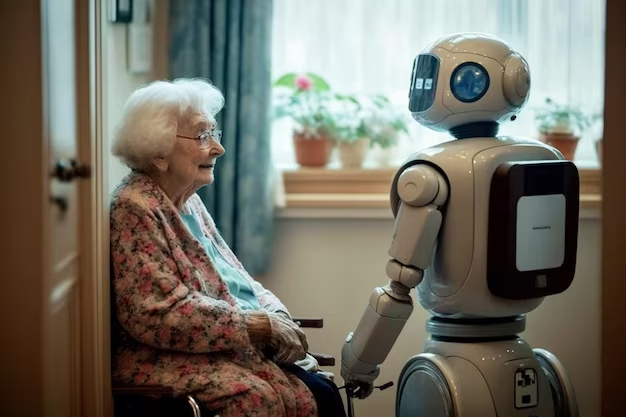


As technology continues to advance, the integration of robotics into various sectors of society has expanded to include the home-care industry. Robots designed to assist with tasks in the home, particularly for elderly individuals and those with disabilities, have the potential to revolutionize personal care and healthcare systems. However, the widespread adoption of home-care robots depends on various factors, including societal attitudes, cultural values, and technological perceptions. A recent study explores these factors in-depth, providing insights into why some people are more willing to accept the use of home-care robots while others are hesitant. This study also sheds light on the potential benefits and challenges of incorporating robots into home care, offering valuable insights for policymakers, developers, and healthcare providers.
The aging population across the world, combined with the increasing demand for personalized and at-home care, has led to an increase in the development of home-care robots. These robots can assist with a variety of tasks, such as reminding patients to take their medication, providing companionship, helping with mobility, and even performing more complex functions like monitoring vital signs or assisting with physical therapy. In countries with rapidly aging populations, such as Japan, South Korea, and parts of Europe, the need for home-care robots is particularly pronounced.
The introduction of these robots offers significant benefits, such as reducing the burden on human caregivers, improving patient safety, and increasing the independence of elderly individuals. However, the adoption of such technology has faced several barriers. These barriers include concerns about trust, the emotional and psychological effects of robot-human interactions, and the perception of robots as an intrusive force in personal lives. For home-care robots to be widely accepted, it is crucial to understand the factors that influence their acceptance and integration into homes.
Studies have shown that people are more inclined to accept home-care robots if they view the robots as practical tools that can alleviate the pressures of caregiving. Elderly individuals, in particular, are more likely to accept robots that provide assistance with mobility or remind them about medication schedules, as these are seen as practical and supportive services.
Trust in the robot’s ability to protect sensitive information and ensure security is particularly important for elderly users, who may be more vulnerable to potential security risks. Developers of home-care robots must address these concerns by ensuring that their products are secure, transparent, and comply with data privacy regulations.
Conversely, in countries with high levels of technological acceptance, such as Japan and South Korea, there is a more positive view of robots and automation in general. In these societies, robots are often seen as a valuable tool that complements human caregiving rather than replacing it. Cultural attitudes toward technology and caregiving must, therefore, be taken into account when introducing home-care robots to a specific region or population.
The design of home-care robots, therefore, needs to balance functionality with social interaction capabilities. Some robots are being developed with features that simulate human-like interactions, such as voice recognition, facial expressions, and the ability to engage in basic conversation. These social robots aim to provide companionship and emotional support, which could help mitigate feelings of loneliness and isolation. However, while these robots may provide some level of emotional support, they are still far from replacing the meaningful interactions humans have with each other.
Making home-care robots more affordable and accessible will be key to their widespread adoption. This could involve reducing manufacturing costs, offering subsidies, or creating payment plans to make these devices more affordable to families in need.
Developers of home-care robots must also prioritize ease of use in their designs. Elderly individuals or caregivers who are not tech-savvy may find complex robotic systems overwhelming. Simple, intuitive interfaces and clear instructions are necessary to ensure that users can easily interact with the robot and understand its functions.
The ability to seamlessly integrate with health monitoring systems or electronic health records (EHRs) is a crucial factor in making home-care robots more useful and practical for both patients and caregivers.
The study of factors influencing the acceptance of home-care robots provides valuable insights for developers, healthcare providers, and policymakers. While technological advancements continue to make robots more capable and affordable, their successful adoption depends on addressing concerns about trust, privacy, cost, and cultural values. Understanding these factors is key to designing robots that meet the needs of users, caregivers, and healthcare systems.
In the future, home-care robots could play a critical role in assisting with caregiving, improving the quality of life for elderly individuals, and alleviating the burden on human caregivers. As technology continues to evolve, it is likely that home-care robots will become an integral part of the healthcare landscape, transforming the way we think about aging and caregiving. However, for this transformation to occur, there must be a concerted effort to address the barriers to acceptance and ensure that these robots are truly beneficial to society.
By embracing the human-robot collaboration and focusing on user-centric designs, home-care robots have the potential to redefine the future of caregiving, making it safer, more efficient, and more personalized for those in need of assistance.















